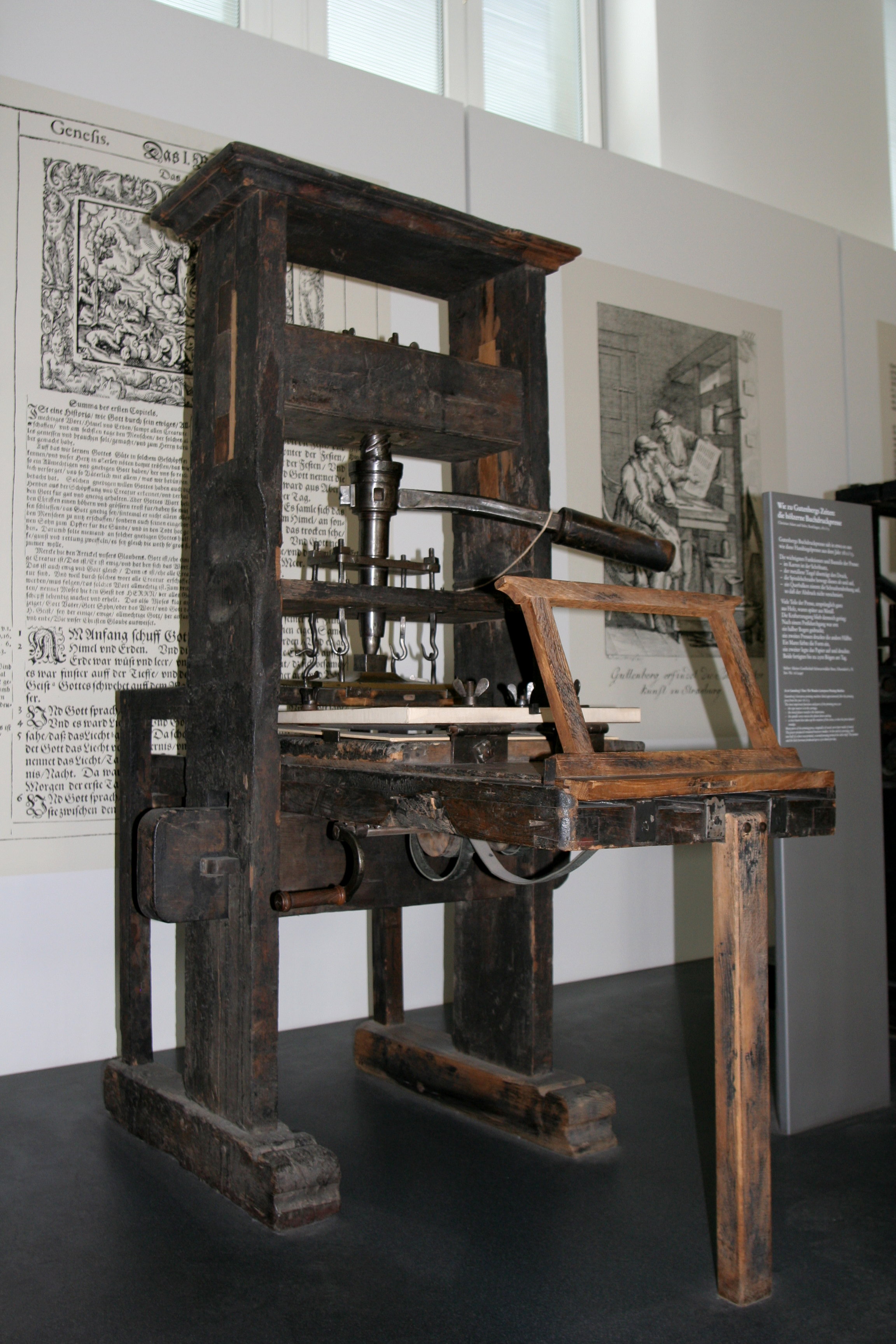
It's one of the most famous discovery stories in history. In 1928, the Scottish scientist Alexander Fleming noticed a bacteria-filled Petri dish in his laboratory with its lid accidentally ajar. The sample had become contaminated with a mold, and everywhere the mold was, the bacteria was dead. That antibiotic mold turned out to be the fungus Penicillium, and over the next two decades, chemists purified it and developed the drug Penicillin, which fights a huge number of bacterial infections in humans without harming the humans themselves.
Penicillin was being mass produced and advertised by 1944. This poster attached to a curbside mailbox advised World War II servicemen to take the drug to rid themselves of venereal disease.

The German Johannes Gutenberg invented the printing press around 1440. Key to its development was the hand mold, a new molding technique that enabled the rapid creation of large quantities of metal movable type. Printing presses exponentially increased the speed with which book copies could be made, and thus they led to the rapid and widespread dissemination of knowledge for the first time in history. Twenty million volumes had been printed in Western Europe by 1500.
Among other things, the printing press permitted wider access to the Bible, which in turn led to alternative interpretations, including that of Martin Luther, whose "95 Theses" a document printed by the hundred-thousand sparked the Protestant Reformation.
When all you have is natural light, productivity is limited to daylight hours. Light bulbs changed the world by allowing us to be active at night. According to historians, two dozen people were instrumental in inventing incandescent lamps throughout the 1800s; Thomas Edison is credited as the primary inventor because he created a completely functional lighting system, including a generator and wiring as well as a carbon-filament bulb like the one above, in 1879.
No hay comentarios:
Publicar un comentario